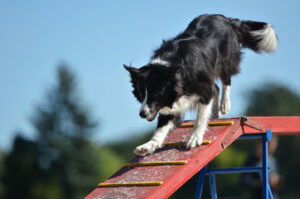Alta Climbing Gilbert is a unique full-body exercise that challenges all of the major muscles and tendons. It is also a great mental workout as climbing requires complete concentration and unburdens the mind of distractions.

Climbers should always start with a warm-up. Dynamic stretches and light climbing on easy routes will loosen the muscles and increase blood flow.
Climbing requires a lot of strength, especially in the fingers and forearms. The muscles used are also different to those used in traditional gym training, as climbing is a specialised sport and there are specific ways that you can train for it. It’s a good idea to train for climbing using a variety of equipment that helps you get stronger, without the risk of falling off a wall.
Thankfully, indoor climbing walls and bouldering routes are designed to be as safe as possible and there is always a safety team on hand to ensure that the ropes and protection are in good condition. However, outdoor climbs are more exposed and this is where it really becomes a high-risk activity. It’s a good idea to always climb under the guidance of a experienced leader or instructor and to always check that a route is safe before taking it on.
A key part of climbing is learning how to use strength effectively, particularly as the grades increase. Rather than being a brute strength sport, it’s about creating opposition force on different sides of your body and between limbs and utilising the most positive parts of a hold. This is known as “neural specificity”.
There are a number of strength metrics that can be used in climbing, such as Wing Span (which shows no significance), maximum pull ups in one set and continuous hang (finger endurance) which shows a strong correlation with climbing grade. Training for these metrics can be done with tools such as the Lattice Board, which is a standardized test of movement efficiency, strength and finger endurance. It is best used under the guidance of a Lattice accredited coach.
Another important metric is footwork, which is a huge part of the success of a climber. This is trained by a variety of methods, including Yoga and Pilates. Developing the ability to trust your feet, move in and out of balance and control your centre of gravity is essential.
A lot of higher-graded climbs have a large element of flexibility in them. This can be as simple as a sloping edge which requires a climber to engage the most positive points of their feet in order to gain contact with the wall. Alternatively, a crimp may require a climber to bend into an unnatural position in order to make the hold work, which again requires a degree of flexibility.
Flexibility
Flexibility is the ability to move a joint through its full range of motion (ROM). This is an important factor in climbing, as tight muscles can limit your movements and increase your risk of injury. Increasing flexibility through regular stretching or mobility exercises can help keep your muscles loose and allow you to perform more moves without straining.
For rock climbers, a high level of flexibility is essential to avoid injuries. This is because the body is constantly moving in unnatural positions while climbing, which can put strain on the joints and muscles. A flexible body can move through these movements with less strain, which will prevent injuries and improve performance.
The flexibility of a person is influenced by several factors, including age, gender, and muscle size. For example, young people tend to have more flexibility than older adults. In addition, a person’s flexibility can be affected by muscle imbalances, which can cause a person to have more or less flexibility in different areas of the body.
Unlike muscular endurance or strength, there is little evidence that flexibility directly influences health outcomes. Most of the studies that have linked flexibility to health outcomes are limited in their scope and design, making it difficult to draw conclusions from the results. The varying physiology of flexibility and the variations in the tests used to measure it make it difficult to establish a consistent link between one specific stretch and an outcome such as back pain or athletic performance.
While it is not clear whether flexibility is associated with health outcomes, some studies have indicated that it may be associated with improved posture and reduced back pain. This may be due to the fact that a person with greater flexibility has better alignment of their bones and muscles, which can reduce back pain.
In addition, studies have shown that flexibility can increase the performance of athletes, and that women are more flexible than men. Flexibility is also important in climbing, because it allows climbers to reach certain holds that would be difficult to do with a rigid body. A good example of this is the foot-first movement required in bouldering, which requires a high level of flexibility to reach the holds.
Endurance
The ability to sustain effort over time is referred to as endurance. Climbers need endurance to perform long routes without getting pumped and to push their limits on harder climbs. Endurance is also necessary to maintain good technique over extended periods of time. Climbers can improve their endurance by incorporating power-endurance training into their regimens, as well as focusing on climbing more efficiently to conserve energy.
The first step in improving endurance is identifying the root causes of your climbing fatigue (forearm pump, grip burn, etc). When you understand what factors cause you to come off a route, you can better plan your approach to train effectively. For example, if you are a beginner who boulders v3 but can’t make it to the top of a 5.10 route, it is likely that your technique is poor and you are using too much strength. The answer is to work on your footwork, body positioning and technique in order to use less of your brute strength, which will allow you to climb more comfortably for longer periods of time.
In terms of endurance training, it is important to mix in some high-intensity interval training, as well as some long-hold, sustained power-training exercises. Using techniques like fingerboards and campus boards can help you develop climbing-specific endurance and explosive strength.
Another way to increase your endurance is to incorporate some moderate-level route work into your regimen. Performing long climbs and concentrating on your technique will help you to gain endurance, as well as push yourself on harder routes.
Climbing demands diverse physiological capacities, and research shows that both power and endurance training improve climbing performance. However, the type of training that is most effective varies by discipline. Specifically, research shows that training approaches used in lead climbing may be more appropriate for establishing higher power-endurance than those for bouldering.
Local endurance is important for climbing because it allows you to stay on the wall without becoming too pumped. Climbers often get pumped on longer routes because their forearm muscles fail to receive enough blood to keep up with the demand for movement. One proactive recovery strategy for increasing local endurance is to flex your forearm muscles in between each grip. This simple movement can increase blood flow to the forearms, and can prevent the build up of lactic acid, which leads to fatigue.
Mental Health
Mental health includes your emotional, behavioral and cognitive well-being. It affects how you handle stressors, interact with others and make choices. Your mental health also influences how you feel about yourself and how happy you are.
Climbing is a highly physical sport that requires both strength and endurance, but it’s also a game of the mind. In order to perform at the highest level, you need to stay focused and calm. You must be able to analyze each move and predict what will happen next. You must also be able to manage your emotions, such as fear, frustration and anger. The more you climb, the better you become at overcoming obstacles and staying in the moment.
In addition to its physical benefits, climbing can improve your mood by triggering the release of feel-good neurotransmitters, such as dopamine and norepinephrine. It can also help you relieve stress by giving you a healthy outlet for pent-up energy and a way to decompress from work, school and family obligations.
Many people find that climbing is therapeutic, especially if they’re struggling with depression. Studies show that rock climbing can decrease the symptoms of depression, perhaps because it demands mindfulness and requires you to focus on the task at hand. Climbing can also boost working memory, which is important for problem-solving and learning new skills.
Taking care of your mental health is as important as taking care of your body. Practicing mindfulness and being grateful for the good things in your life can help you stay positive. It’s also helpful to build healthy, supportive relationships. These activities can help you feel good about yourself and enjoy the adventures of your life.
Climbing is a great way to stay physically active, but it’s also a fun way to socialize and get some fresh air. You can join a climbing team, meet people at your local gym or go on outdoor rock climbing trips. Just be sure to check with your doctor before starting a new exercise program. They can recommend a safe and effective exercise for you and your needs.
